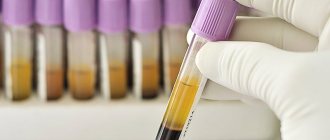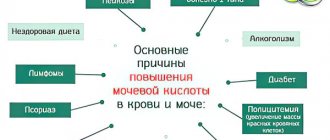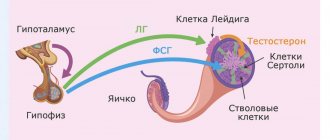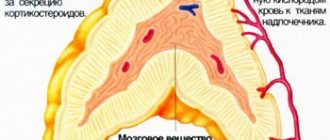Ways of infection with worms:
- contact with soil and water that contain parasite eggs (sandbox and puddle are no exception);
- consumption of foods that have not been properly processed - plant foods, meat, fish may contain worm eggs;
- neglect of hygiene;
- transmission of worms from mother to child during childbirth;
- regular contact with animals, especially street animals or those that go outside;
- visiting a room with insects;
- contacts with already infected children;
- low immunity;
- moving to another country, associated with stress on the body and incomplete acclimatization.
Based on the causes of the disease, it is not difficult to develop a system of minimal prevention - teach the child to wash his hands regularly, feed him only properly processed foods, and ensure sanitary control in the house. However, no one has canceled contacts with street animals and licking swings; the result is intestinal damage by parasites. Not all helminths immediately manifest themselves actively - they can remain dormant in the body for years, so regular checks, especially for children, are extremely important.
Classification of parasites
Different types of worms affect the body differently, and have their own characteristics both in the development cycle and in appearance and damage caused. There are three most common groups of worms: nematodes, cestodes, and trematodes.
The first group is the protocavitary worms. They live in soil and water, so they can easily become infected in the sandbox and during a walk in general. It is this group that includes the most common pinworms and roundworms, and also includes hookworms, trichinella, and guinea worms. Depending on which parasite caused the infection, ascariasis, enterobiasis, trichuriasis, etc. are distinguished.
Cestodoses are tapeworms that can live both in the intestines (the most common variant is tapeworms) and in organs (usually the larvae of tapeworms, echinococci, and alveococci live there). In accordance with which of these types of worms are found in children, echinococcosis, taeniasis, hymenolepiasis, etc. are distinguished.
And the last of the three popular groups is trematoses caused by trematodes. These are several types of flatworms - schistosome, cat/liver fluke, leukochloridium. They provoke opisthorchiasis (transmitted from fish of the carp family) and fascioliasis (the liver and bile system suffer, infection through plants or water).
Symptoms
There are a lot of symptoms, and individual manifestations depend on which helminth eggs have entered the body. Next, we will talk about the general symptoms for all parasitic infections, and then about enterobiasis, ascariasis and 5 other types of infections.
General symptoms:
- increased irritability, restless sleep, decreased perseverance and attentiveness, frequent hysterics and anger;
- increased appetite associated with active weight loss;
- symptoms from the digestive system - diarrhea, constipation, nausea, pain in the right hypochondrium;
- dizziness and headache;
- food allergies;
- nasal discharge;
- diseases and infections of the reproductive system;
- brittle nails/hair;
Enterobiasis is a helminthiasis in which the body is infected by pinworms. The larvae emerge from the eggs within 4-6 hours; in 2-4 weeks they become adults - grayish or white roundworms 5-10 mm long. They settle in the cecum and appendix, and lay eggs outside the anus - at night, female pinworms come out into the air for this purpose. This reproduction mechanism leads to severe itching at night - hence restless sleep, tossing and turning, and screaming.
Additional special symptoms:
- night urination;
- grinding teeth;
Ascariasis is a helminthiasis in which the body is colonized by roundworms. These worms are already larger - the average length of an adult is 25-30 cm. The larvae and eggs enter the body with insufficiently disinfected fresh fruits and vegetables. The development period takes place in the intestines, after which they pass into the lymphatic and blood vessels, and with the flow of blood and lymph they are distributed throughout the body - in the liver, heart, lungs. They then enter the oral cavity and are re-swallowed. From this moment, adult roundworms begin to develop. This takes approximately 3 months.
How to suspect the presence of worms in children:
- the liver, spleen, lymph nodes enlarge;
- the temperature rises, sometimes up to 38 degrees;
- malaise and weakness appear;
- respiratory pathologies develop - pneumonia, bronchitis and bronchial asthma;
- pressure drops;
- Gastrointestinal symptoms appear - constipation, diarrhea, nausea and vomiting, pain in the form of contractions;
- fear of light;
- nightmares at night;
- dry cough - sputum with an orange tint and bloody spots.
It is more difficult to breed roundworms than pinworms, since the female lays almost 250 thousand eggs every day. In no case should you rely on traditional methods or buy the first remedy you come across at the pharmacy - be sure to contact a specialist.
These are not all worms in children that inhabit the body. There are more than 300 species of helminths in the world, and 70 of them are found in Russia alone. In addition to the two listed types, 5 more types are becoming widespread:
- trichocephalosis - characterized by a lag in both physical and intellectual development, but in general it is almost asymptomatic;
- opisthorchiasis – the temperature rises, the nodes of the lymphatic system enlarge, skin rashes appear;
- hymenolepiasis – the main consequence is rhinitis;
- toxocariasis - has many symptoms that distinguish it from other helminth infections: keratitis, cough with suffocation, ophthalmitis, chorioretinitis, facial swelling;
- wide tapeworm - characterized by anemia, intestinal disorders, pain in the abdominal area.
Infants may experience symptoms after just a few weeks of life if they have received the eggs and larvae of worms from their mother, for example during childbirth. As a rule, symptoms manifest themselves in the form of lack of weight gain, excessive drooling, rash, pallor, blue under the eyes, constipation. The child is constantly worried, screams, sleeps and eats poorly. The screaming can be unbearable and the baby will turn blue in the process.
Worms are often the cause of the development of pulmonary pathologies and are diagnosed using ultrasound or x-ray. Parasites, in particular Echinococcus tapeworm, can damage not only the respiratory system, but also move further to the brain and heart. In areas where helminths develop in the lungs, scars and adhesions appear, and the shape of the lungs begins to change. Such changes provoke a wide range of diseases - asthma, fibrosis, bronchitis, pleurisy, emphysema, etc. When a tapeworm enters the lungs, echinococcosis is formed, when the parasite develops in the form of a cyst.
Symptoms will largely depend on which helminth has entered the body, but the child’s anxiety and the presence of the above general symptoms should alert parents. If signs of worms appear, make an appointment with a pediatrician or gastroenterologist to get tested in a timely manner.
When should you get tested?
A referral for a scatological examination for helminth eggs must be issued by a local pediatrician or family doctor in the following cases:
- when visiting a public swimming pool or sports sections;
- when preparing medical records;
- before registering a child for kindergarten or school;
- upon admission to the hospital.
The analysis results are valid for ten days. At the same time, this study should be taken quite seriously, since no one can be sure that the child is not infected with parasites.
Typically, such an examination is prescribed routinely in pediatric practice. Conducting an analysis in both children and adults is necessary if there are cats or dogs in the house, work activity associated with prolonged and frequent contact with animals, or suspicion of helminthiasis.
This test is also prescribed for the following negative symptoms:
- frequent gastrointestinal disorders: constipation or diarrhea;
- significant reduction in body weight;
- increased flatulence;
- frequent occurrence of ARVI;
- frequent and painful urination;
- severe itching in the anus;
- increased fatigue;
- allergic reactions.
Indications for such a study are problems with the cardiovascular system, liver, brain, lymph nodes or bladder.
Diagnostics
Diagnosis of worms in children is carried out in different ways - depending on what worms the child is infected with, the habitat, location of the eggs, and toxins found in the body will differ.
To make a diagnosis, the following may be prescribed:
- blood test - shows anemia, hemoglobin and eosinophil levels;
- analysis for parasites - in 99% of cases it helps to detect helminthiasis, and in most cases it helps to accurately determine the type (biomaterial for research - blood from a vein);
- examination of stool - there may not be eggs in the stool, even if there is an infection, to ensure the presence of worms, this diagnosis should be carried out 3 times, which takes time;
- smear - especially effective in case of pinworm infection, since their eggs are found just outside the anus;
- stool analysis for dysbacteriosis;
- if there is a suspicion of infection of internal organs, and not just the gastrointestinal tract - CT, X-ray, ultrasound.
Diagnostics allows you to accurately identify the type of parasite and prescribe specific treatment. The doctor prescribes medications, diet, additional supportive procedures, and gives recommendations for care and hygiene.
In some cases, parents pay increased attention to helminthiasis and are constantly worried about infecting their child. This leads to regular “preventive” courses of serious anthelmintic drugs, which do not bring any benefits to the baby’s body. If your child is not losing weight, feels well, eats well, has a healthy complexion, and does not have itching in the anal area, he is likely healthy. If you want to make sure of this, it is better to get tested than to take an unnecessary course.
How to find out if there are parasites in the body?
A person may suspect they have parasites based on their characteristic signs. The most common symptoms of parasitic infestations include:
- itching in the anus,
- grinding teeth in sleep;
- peeling of the skin;
- the appearance of allergic rashes on the skin;
- unstable chair.
Only a thorough medical examination can confirm or refute the presence of parasites in the body.
Today, many laboratories offer a huge number of tests to identify parasitic infestations. However, it is difficult for a person without medical knowledge to understand such diversity. Therefore, before the examination, it is advisable to visit an infectious disease specialist .
Given the amount of symptoms and syndromes that can develop against the background of chronic parasitosis, only a doctor can adequately assess the importance and advantages of certain diagnostic methods. In addition, during the collection of anamnesis and examination, a specialist can identify direct or indirect signs of parasitosis that the patient himself did not pay attention to.
Treatment
The course of therapy for worms in children includes several stages - preparation, therapy and cleansing. During the entire treatment, it is necessary to carry out general preventative measures and carefully observe hygiene to avoid re-infection or infection of one of the family members. Some types of worms, such as tapeworms and echinococci, can only be removed surgically.
The preparatory stage involves taking sorbents - Smecta, Entegnin, which absorb toxins and cleanse the body. They are followed by antihistamines, they relieve general itching and prevent the development of allergic reactions to drugs.
Treatment of helminthiasis in children at the main stage is directly taking anthelmintic drugs in the form of tablets, suppositories or suspensions. Medicines are selected depending on the type of helminth, individual indications and contraindications. Some anthelmintics work in 2 doses:
- the first course kills already developed individuals;
- the second course helps to cope with larvae and eggs (prescribed 2 weeks after the first).
Cleansing is designed to rid the body of the remnants of dead parasites; at this stage, sorbents, enemas, and choleretic drugs are used. You can help your baby by adding raw carrots, dairy products, coarse bread, fruits, vegetables, fish oil, nuts, especially walnuts and peanuts to the diet.
Additionally, to restore the body in case of serious damage, vitamin complexes, iron, minerals, and a special diet can be used, which will increase hemoglobin, restore liver function and strengthen the body as a whole. The doctor describes the treatment plan in detail, avoiding side effects. Control tests are required. Self-medication and deviation from the plan are not allowed.
What tests are used for diagnosis?
The main methods for diagnosing parasitic infestations include:
Microscopic analysis of stool.
Using the technique, you can detect the presence of luminal parasites that affect the gastrointestinal tract. This test does not detect tissue parasites. The reliability of microscopic analysis of stool is quite low: 12–18%. To increase the accuracy of diagnosis, it is necessary to conduct repeated studies.
Serological diagnosis.
During the study, a blood test determines the presence of highly specific antibodies to a particular pathogen. For example, to Giardia, Ascaris, Trichinella. The percentage of detection of parasites during serological diagnosis is much higher than during microscopic examination of stool. The reliability of the method is 40–60%.
Why is the research not completely reliable? The thing is that if a person’s immune system is weakened, then it will not produce antibodies to parasites. For example, a decrease in the body's defenses is observed during chronic parasitic infestation. Parasites act as powerful immunosuppressants that can block the production of antibodies. There are also other reasons that affect the normal functioning of the immune system: herpes infections, allergic conditions, pregnancy, autoimmune pathologies.
Scraping from perianal folds.
The method allows you to identify the eggs of parasitic worms - pinworms, bovine tapeworm, pork tapeworm. Before collecting biomaterial, it is important not to carry out hygienic procedures: parasite eggs can be washed off with water when washed.
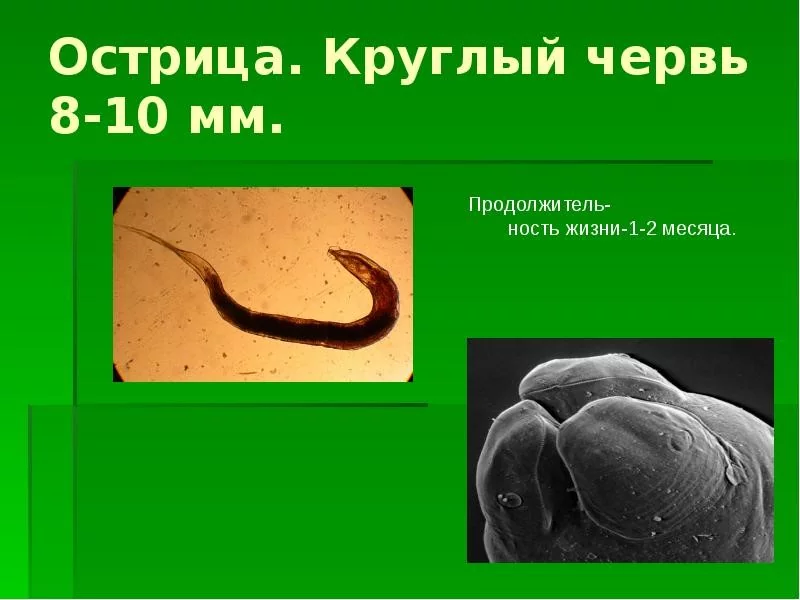
Additional laboratory signs of parasitosis
In addition to the basic laboratory diagnostic methods, there are also indirect signs that allow the doctor to suspect a parasitic infestation:
- changes in the general blood test . CBC indicators indicating parasites include periodically rising levels of eosinophils, prolonged lymphocytosis with monocytosis. However, high levels of eosinophils in the blood are observed only in the first 3–4 weeks after infection. In a later period, eosinophils go into the tissues, and their level in the blood decreases. Lymphocytosis with monocytosis is a more persistent sign of the presence of parasites in the body. With chronic parasitic infestation, high levels of lymphocytes and monocytes in the blood can persist for months or years. But with such a deviation, competent differential diagnosis is important, since lymphocytosis with monocytosis is often observed in other diseases;
- high level of eosinophilic cationic protein (ECP) in the blood. The concentration of ECB in the blood serum is proportional to the number of eosinophils;
- increased concentration of immunoglobulin E in the blood serum. Such a violation may indicate hidden allergization, which is often a companion to parasitosis. A significant release of immunoglobulin E is observed during the acute phase of parasite infection;
- deviations from the norm in the analysis of liver tests . For example, increased bilirubin and transaminase may indicate secondary liver damage or congestion in the biliary system. In turn, these disorders are often accompanying intrahepatic parasitosis. The liver can be affected by both serious liver parasites (cat fluke, opisthorchis) and more common parasites - Giardia, Toxocara.
It happens that parasites are detected in a urine test. For example, the urinary system can be affected by filaria, pinworms, dysenteric amoebas, and echinococci. Penetrating into the kidneys and bladder, they cause pyelonephritis, cystitis and other serious inflammatory processes.
Consequences of untreated parasitic infestations
Helminthiasis poses a serious danger; without treatment, it can result in death or significant health problems. An infected child poses a danger to the entire family and environment, as it spreads the disease.
Complications of worms in children:
- inflammatory exacerbation of appendicitis;
- epileptic seizures;
- visual impairment of several types;
- allergic reactions with copious nasal discharge;
- developmental lag behind peers;
- sexually transmitted infections, the most common in girls is vulvovaginitis;
- various types of pulmonary manifestations, including bronchial asthma;
- in difficult cases - damage to the brain and heart.
How dangerous are parasites for humans?
Parasites are organisms that live on the surface or inside another organism (host). For parasites, humans can be either an intermediate or a definitive host. In the first case, the larval stage of the parasite lives in the human body, in the second - the sexually mature form.
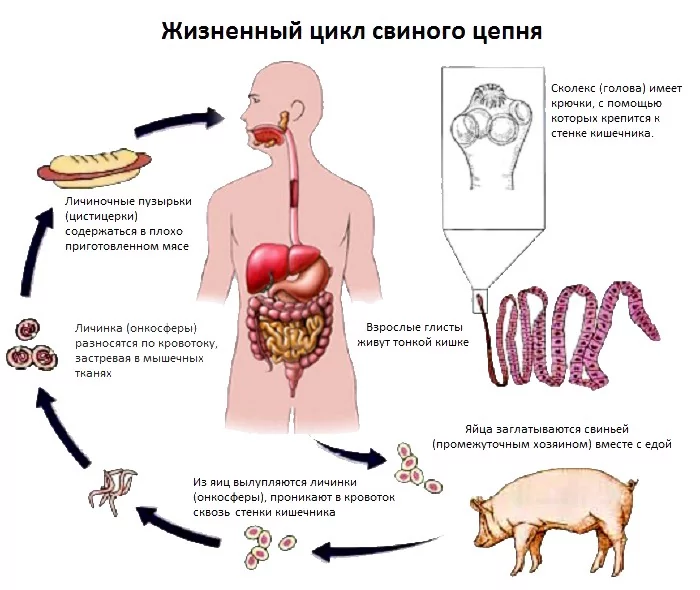
Parasites can cause chronic fatigue syndrome, various autoimmune diseases, and chronic pathologies. Many of them release substances into the human body that reduce immunity. This gradually leads to immunosuppression: a person gets sick from ARVI more often, his protection against viruses and bacteria decreases, and chronic inflammatory processes worsen.
In addition, parasites are capable of:
- exert a mechanical effect on organs, injuring the tissues of the intestines, liver, kidneys, lungs;
- disrupt metabolism. Parasites constantly absorb part of the food intended for the host. In this regard, the body may experience a deficiency of proteins, vitamins, minerals and other nutrients;
- provoke allergic reactions;
- negatively affect the nervous system;
- cause symptoms of intoxication of the body (nausea, vomiting, diarrhea), pain.
It happens that parasites cause such serious diseases as cholecystitis, hepatitis, pancreatitis, myocardial infarction, and infertility.
Prevention
To ensure that treatment of worms in children is not required at all, it is necessary to actively engage in prevention, which consists of both daily precautions and hygiene procedures, as well as taking medications.
How to protect your baby from parasitic infection:
- Maintain hygiene – regularly wash your child’s hands and bathe him;
- regularly care for toys - washing and cleaning (after diagnosis, all toys must be disinfected);
- cut your nails as often as possible, clean them every day;
- iron clothes after washing;
- get rid of bad habits - sucking fingers, pens, biting nails;
- give only boiled water to drink and explain the reasons;
- avoid swimming in natural bodies of water;
- use repellents (insects often carry worm eggs), destroy all insects that enter the house;
- regularly check pets for parasites;
- Wash fruits and vegetables thoroughly, conduct sufficient heat treatment of meat and fish.
Some types of helminthiases are difficult to cure, so we recommend preventive measures to avoid infection. When contacting the clinic, parents will receive full advice on how to properly carry out prevention to avoid problems in the future.
Make an appointment
The clinic offers the services of an experienced gastroenterologist, candidate or doctor of medical sciences, who will make a preliminary diagnosis, prescribe only the necessary studies according to the results of the examination, and write out a treatment plan. Having our own laboratory allows us to quickly obtain tests, and the absence of queues and appointments by appointment allows us to prescribe treatment as soon as possible. To make an appointment, select the doctor you like and fill out the form on the website, use the general appointment form, the function to order a call back, or simply call our contact center.
